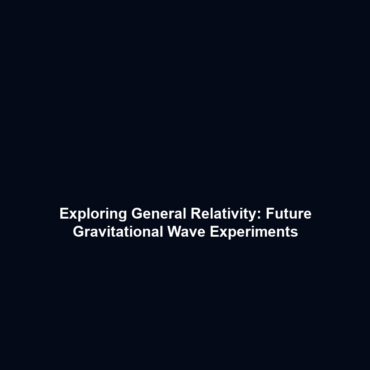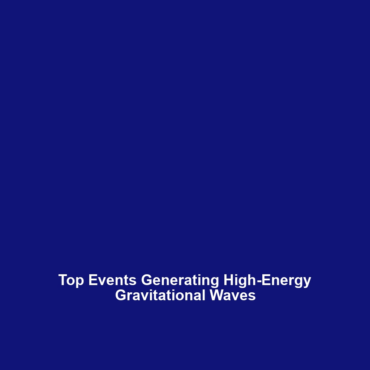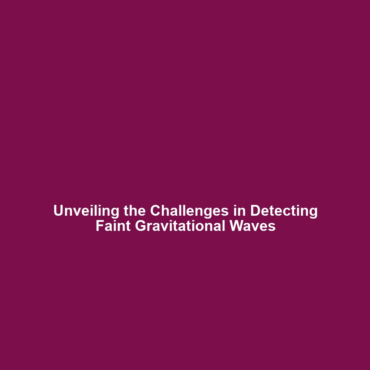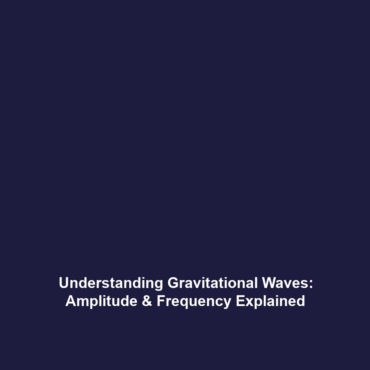Future Experiments Aimed at Testing the Limits of General Relativity Using Gravitational Waves
Gravitational waves, ripples in the fabric of spacetime created by accelerating masses, provide profound insights into the fundamental laws of physics. As scientists analyze these cosmic phenomena, ongoing and future experiments are poised to challenge the boundaries of General Relativity, aiming to uncover new dimensions of our understanding of the universe. This article explores the future of gravitational wave research and its potential implications for General Relativity.
Key Concepts
Understanding the implications of gravitational waves requires a grasp of several core concepts:
- General Relativity: Einstein’s theory that describes gravity as the curvature of spacetime caused by mass.
- Gravitational Waves: Disturbances propagating through spacetime as predicted by General Relativity, arising from astrophysical events like merging black holes.
- Interferometry: A technique used in gravitational wave detectors like LIGO, where laser beams are used to measure minute changes in distance caused by passing waves.
Significance in Gravitational Waves
The pursuit of experimental verification and potential displacement from established theories fosters a richer understanding of gravitational waves and may point to new physics beyond General Relativity.
Applications and Real-World Uses
Future experiments aimed at testing the limits of General Relativity using gravitational waves hold numerous practical applications:
- Astronomical Observations: Enhancing our understanding of neutron star collisions and black hole mergers, which can provide insight into cosmic events.
- Testing Gravitational Theories: Analyzing the data from gravitational wave detections to determine the accuracy of current gravitational theories.
Understanding how these experiments are used in gravitational wave research is crucial for advancing astrophysics.
Current Challenges
Despite significant progress, several challenges persist in studying gravitational waves:
- Noise Interference: Background noise from environmental factors complicates the detection of faint gravitational signals.
- Technological Limitations: Current instruments may not be sensitive enough to detect weaker gravitational waves or the predicted distortions.
- Data Analysis: The sheer volume of data generated by detectors makes it challenging to identify relevant signals.
Addressing these challenges of future experiments is essential for reliable gravitational wave analysis.
Future Research and Innovations
The horizon of gravitational wave research is expanding, with promising advancements anticipated:
- Next-Gen Detectors: Projects like the Einstein Telescope and LISA will provide enhanced capabilities to observe and analyze gravitational waves.
- Quantum Sensors: Innovations leveraging quantum technology to improve measurement precision significantly.
These breakthroughs stand to redefine our comprehension of gravitational waves and their relationship with General Relativity, potentially confirming, refuting, or expanding upon existing models.
Conclusion
Future experiments testing the limits of General Relativity using gravitational waves are poised to reshape our understanding of the universe. By addressing current challenges and embracing emerging technologies, researchers can unlock new insights into fundamental physics. To stay updated on related topics, explore our articles on gravitational waves and General Relativity.
This format provides a structured, informative article that is both SEO-optimized and accessible for readers interested in the intersection of gravitational waves and General Relativity.



